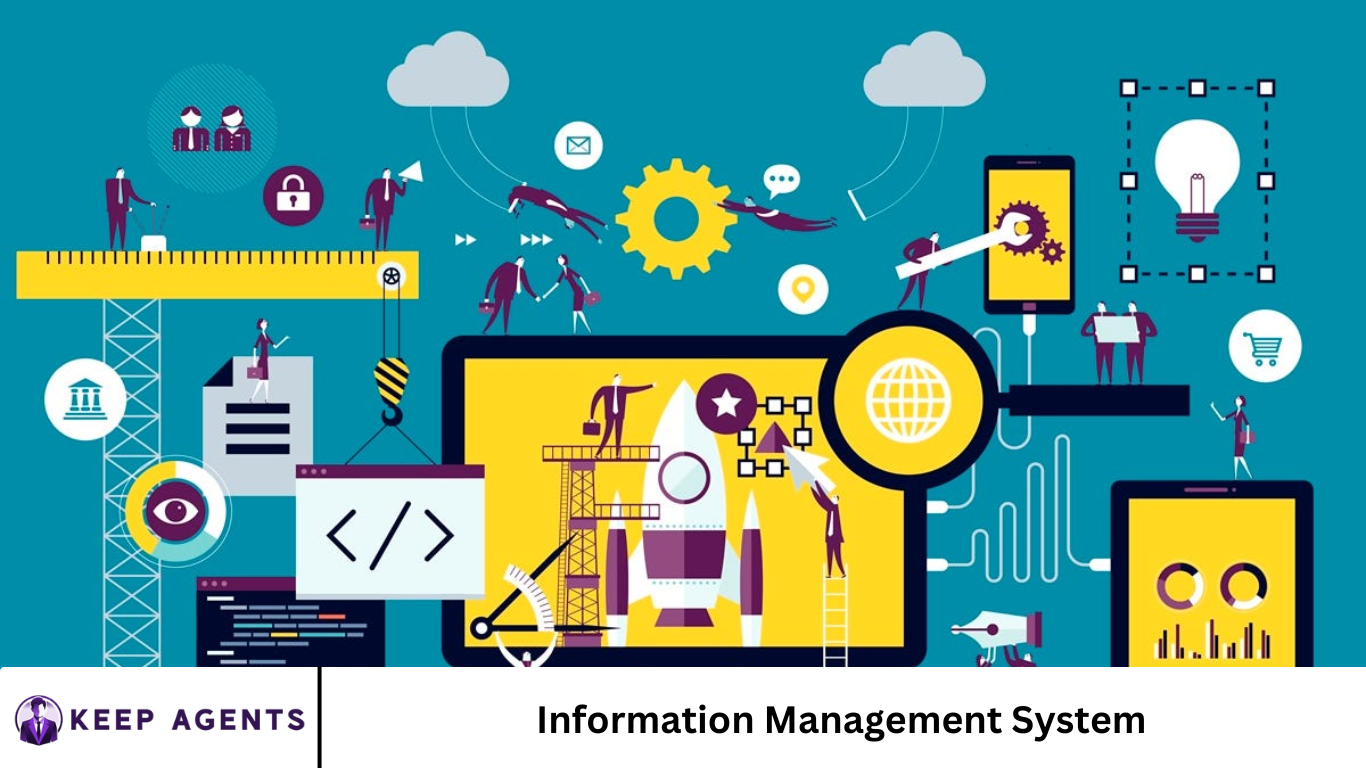Data-driven world, managing information efficiently is crucial for business success. An Information Management System (IMS) plays a pivotal role in organizing, storing, and managing data to support decision-making, streamline operations, and maintain competitive advantage.
This article delves deep into what an information management system is, its types, benefits, key features, implementation strategies, and the future trends shaping this essential technology.
More Read: 10 Essential Tips for Creating User-Friendly API Documentation
What is an Information Management System?
An Information Management System (IMS) refers to a set of processes, tools, and technologies used to collect, store, manage, and distribute information within an organization. It enables businesses to transform raw data into meaningful insights, ensuring that the right information reaches the right people at the right time.
Unlike traditional data storage solutions, IMS integrates multiple data sources, facilitates easy access, and supports collaboration across departments. It is essential for managing documents, records, workflows, and communications effectively.
Key Components of an Information Management System
An effective IMS generally includes several core components:
- Data Collection: Gathering data from various sources including internal databases, external feeds, documents, and user input.
- Data Storage: Securely storing data using databases, cloud services, or on-premises servers.
- Data Processing: Transforming raw data into usable formats and extracting valuable insights.
- Information Retrieval: Allowing users to search, access, and retrieve relevant information quickly.
- Distribution and Sharing: Enabling secure sharing of information across teams and departments.
- Security and Compliance: Protecting sensitive data through access controls, encryption, and regulatory compliance.
Types of Information Management Systems
Different organizations require different types of IMS based on their needs. Some common types include:
1. Document Management Systems (DMS)
DMS focuses on managing digital documents, including creation, storage, version control, and retrieval. It helps businesses maintain organized records and facilitates collaboration.
2. Content Management Systems (CMS)
CMS are designed for managing digital content, such as websites, blogs, and media. They enable non-technical users to publish and update content easily.
3. Customer Relationship Management (CRM) Systems
CRM systems manage customer data, interactions, and relationships, helping businesses improve customer service and sales.
4. Enterprise Resource Planning (ERP) Systems
ERP integrates various business processes, such as finance, HR, supply chain, and manufacturing, into one unified system.
5. Knowledge Management Systems (KMS)
KMS helps capture, store, and distribute organizational knowledge to improve decision-making and innovation.
Why Businesses Need an Information Management System
Organizations across industries face the challenge of managing vast amounts of data. Implementing a robust IMS offers multiple benefits:
1. Enhanced Decision-Making
IMS provides timely and accurate information, enabling managers to make informed decisions based on real data insights.
2. Improved Collaboration
By centralizing information, IMS promotes teamwork and knowledge sharing among departments, breaking down silos.
3. Increased Productivity
Automating information handling reduces manual work and errors, freeing employees to focus on higher-value tasks.
4. Better Customer Service
Access to accurate customer data allows companies to provide personalized and responsive service.
5. Regulatory Compliance
IMS ensures data is managed according to legal requirements, reducing the risk of fines and reputational damage.
6. Cost Savings
Reducing data duplication, paper usage, and manual processes leads to operational efficiencies and cost reduction.
Key Features to Look for in an Information Management System
When selecting an IMS, businesses should consider these essential features:
- User-Friendly Interface: Easy navigation and minimal training requirements.
- Integration Capabilities: Seamless connection with existing software and databases.
- Robust Security: Role-based access, encryption, and audit trails.
- Scalability: Ability to grow with business needs and handle increasing data volumes.
- Advanced Search: Powerful search tools with filters and metadata support.
- Automation: Workflow automation to streamline repetitive tasks.
- Mobile Access: Support for remote access via mobile devices.
- Analytics and Reporting: Tools for data visualization and insights.
Steps to Implement an Information Management System Successfully
Successful IMS implementation requires careful planning and execution. Here’s a step-by-step guide:
1. Assess Business Needs
Identify what information challenges your organization faces and what goals the IMS should achieve.
2. Define Requirements
Outline technical and functional requirements, involving stakeholders from various departments.
3. Select the Right Solution
Evaluate IMS vendors and products based on features, scalability, security, and cost.
4. Plan for Integration
Ensure compatibility with existing systems like ERP, CRM, or HR software.
5. Train Employees
Conduct comprehensive training to ensure adoption and effective use.
6. Migrate Data
Transfer existing data carefully, ensuring data quality and integrity.
7. Monitor and Optimize
Regularly review system performance and gather user feedback for improvements.
Common Challenges and How to Overcome Them
Implementing an IMS can face hurdles such as:
- Resistance to Change: Overcome by involving employees early and demonstrating benefits.
- Data Quality Issues: Implement data cleansing and governance policies.
- Security Concerns: Prioritize strong security measures and compliance.
- Integration Complexities: Work with experienced IT professionals for smooth integration.
- Cost Overruns: Set clear budgets and choose scalable solutions.
The Future of Information Management Systems
The IMS landscape is evolving rapidly, driven by new technologies:
Artificial Intelligence and Machine Learning
AI-powered IMS can automate data classification, identify patterns, and provide predictive insights.
Cloud-Based Systems
Cloud IMS solutions offer flexibility, cost savings, and accessibility from anywhere.
Big Data Analytics
IMS integrated with big data tools helps organizations handle massive datasets efficiently.
Blockchain for Data Security
Blockchain technology enhances data integrity and traceability.
Enhanced User Experience
Voice recognition, natural language processing, and intuitive interfaces improve usability.
Frequently Asked Question
What is an Information Management System (IMS)?
An Information Management System (IMS) is a software or set of tools designed to collect, store, organize, and distribute information within an organization to improve decision-making and operational efficiency.
Why is an Information Management System important for businesses?
IMS helps businesses manage large volumes of data efficiently, enabling better collaboration, faster access to information, improved productivity, and compliance with data regulations.
What are the main types of Information Management Systems?
Common types include Document Management Systems (DMS), Content Management Systems (CMS), Customer Relationship Management (CRM), Enterprise Resource Planning (ERP), and Knowledge Management Systems (KMS).
How does an IMS improve decision-making?
By providing accurate, timely, and relevant information, IMS enables managers and employees to make informed decisions based on real-time data and insights.
What features should I look for in an Information Management System?
Key features include user-friendly interface, data security, integration with other systems, advanced search capabilities, automation tools, scalability, and reporting analytics.
Can an Information Management System be customized for specific industries?
Yes, many IMS solutions offer customization options tailored to industry-specific needs such as healthcare, finance, manufacturing, and education.
What are the challenges in implementing an Information Management System?
Common challenges include resistance to change, data quality issues, security concerns, system integration difficulties, and budget constraints. Proper planning and training can mitigate these challenges.
Conclusion
An Information Management System is indispensable for modern organizations aiming to leverage data for strategic advantage. By selecting the right IMS and implementing it thoughtfully, businesses can improve decision-making, foster collaboration, ensure compliance, and boost overall productivity. As technology advances, staying updated with the latest IMS trends will keep your organization ahead in managing its most valuable asset—information.


